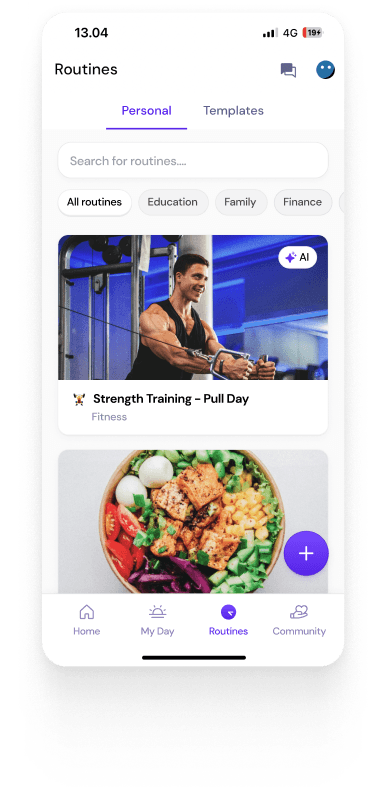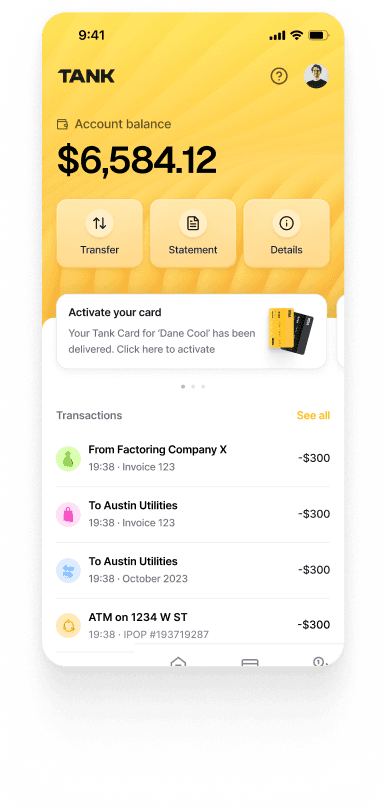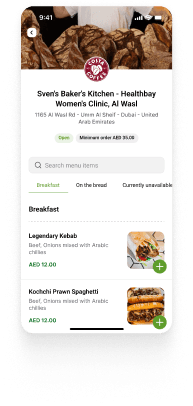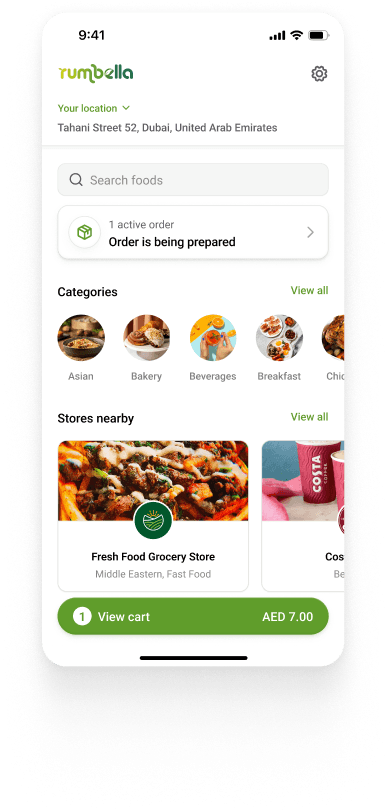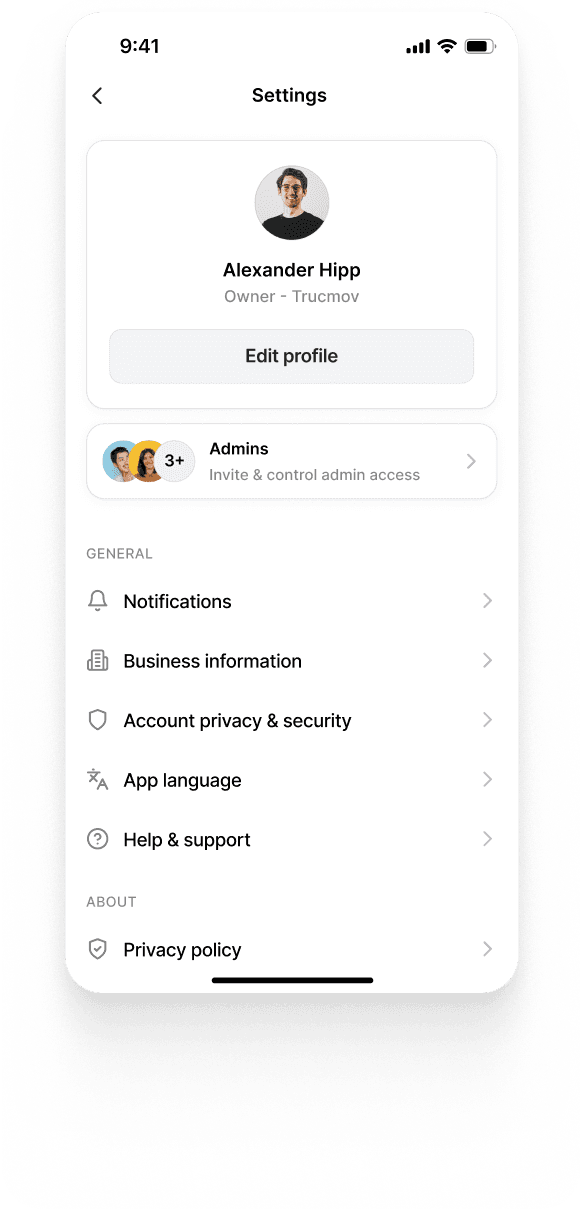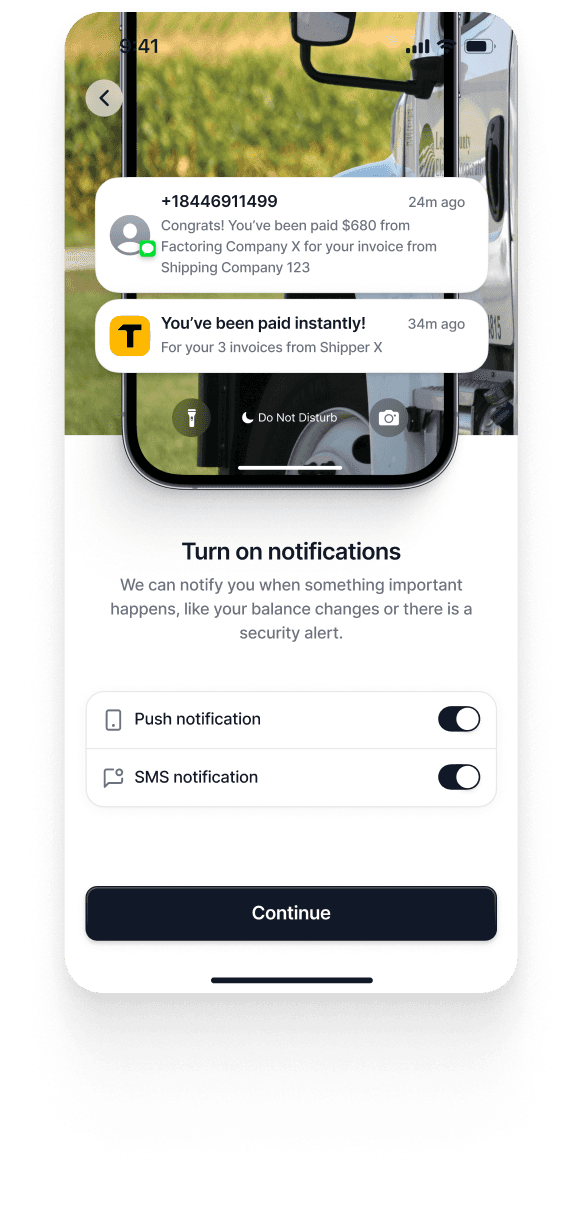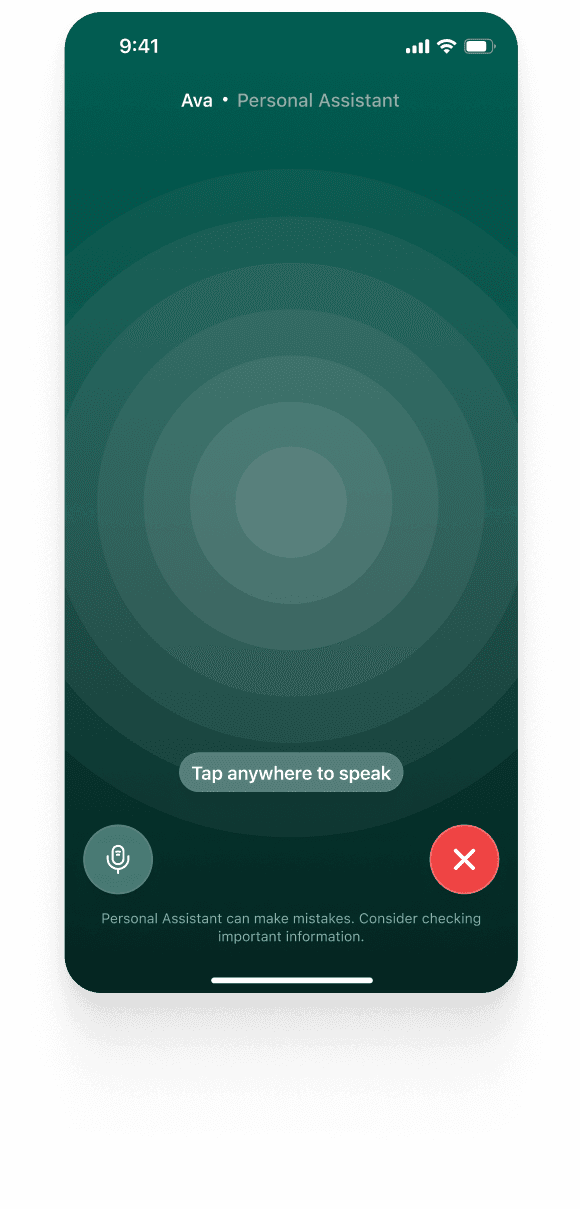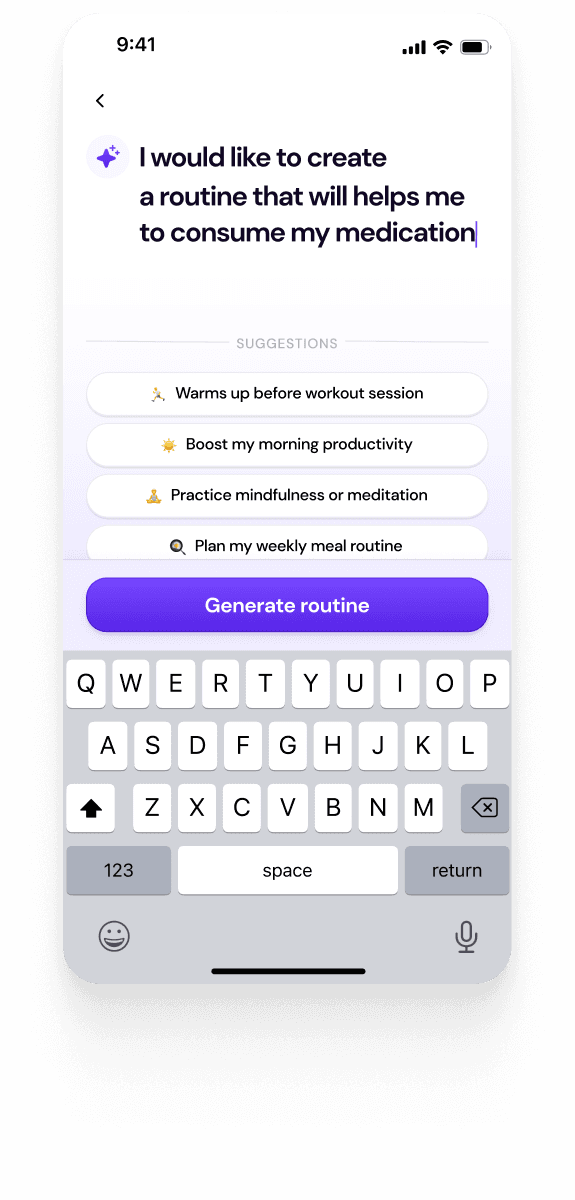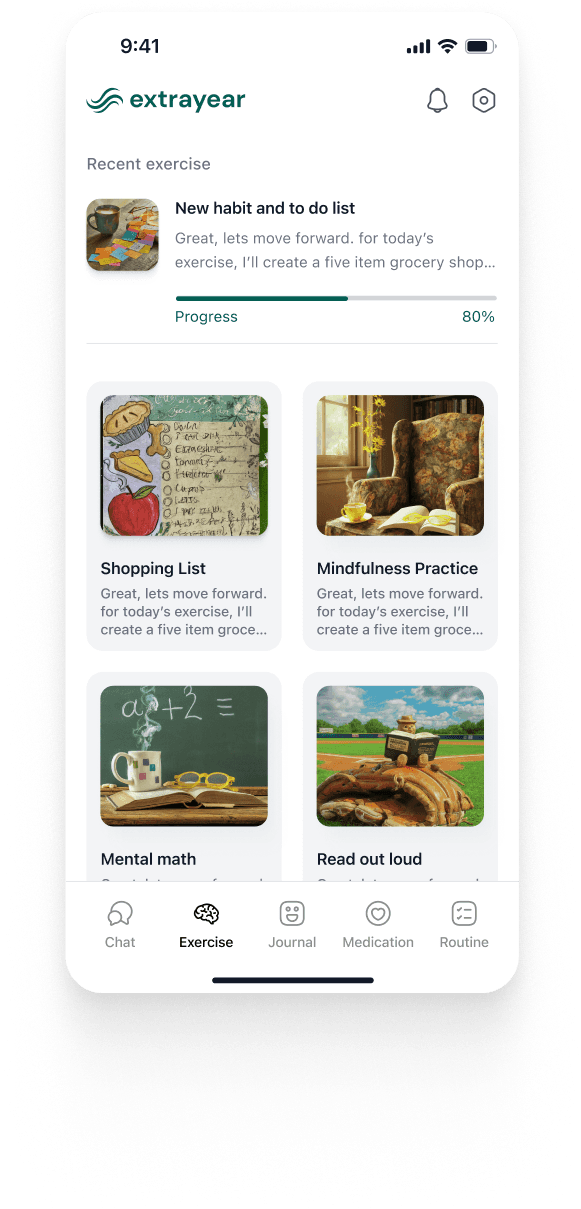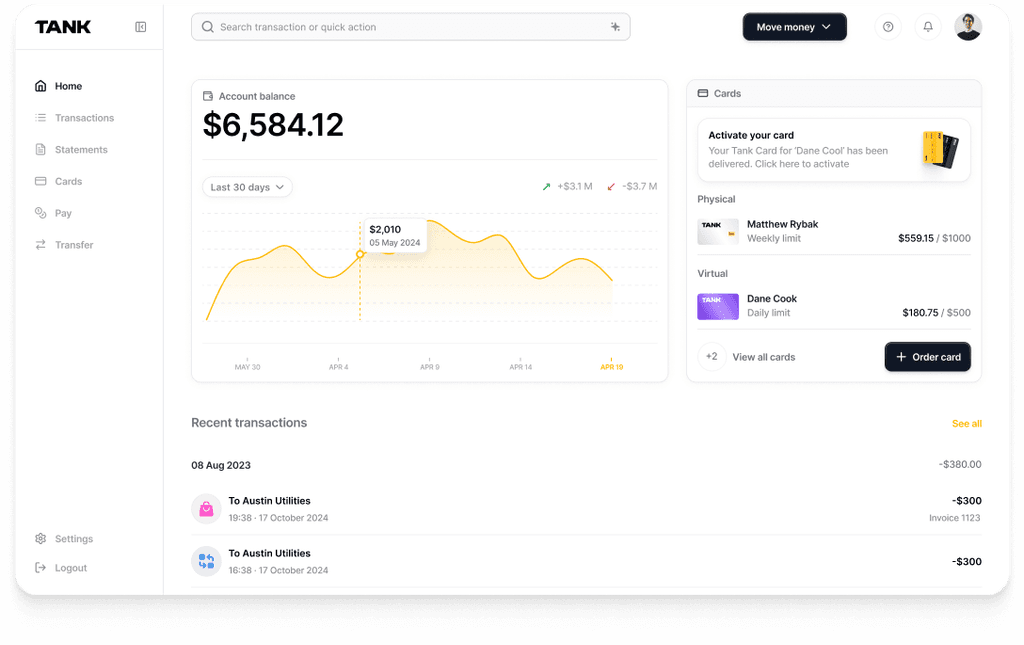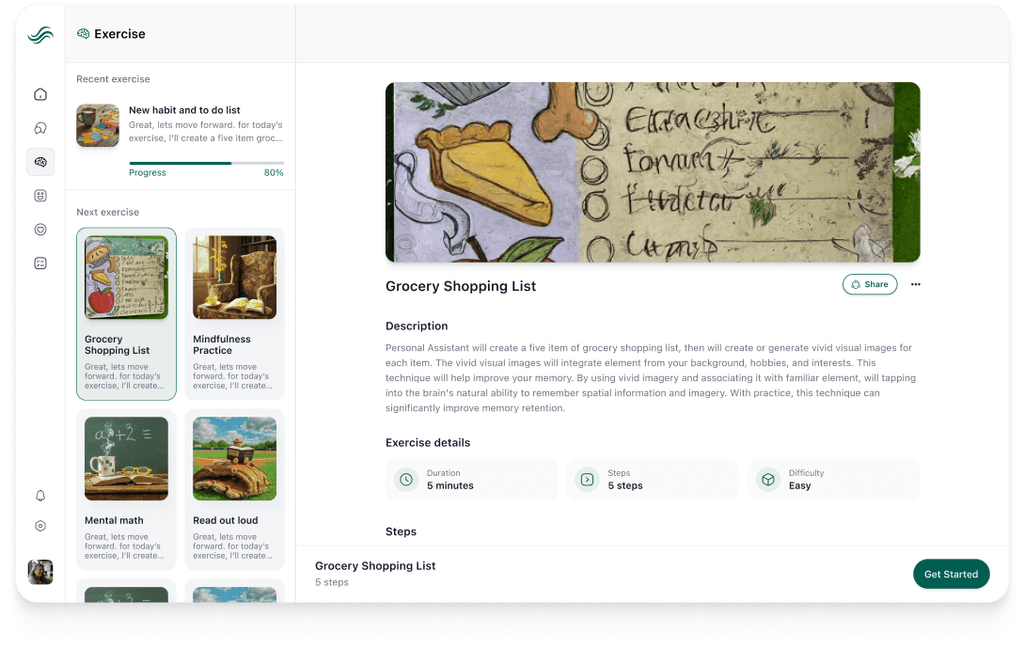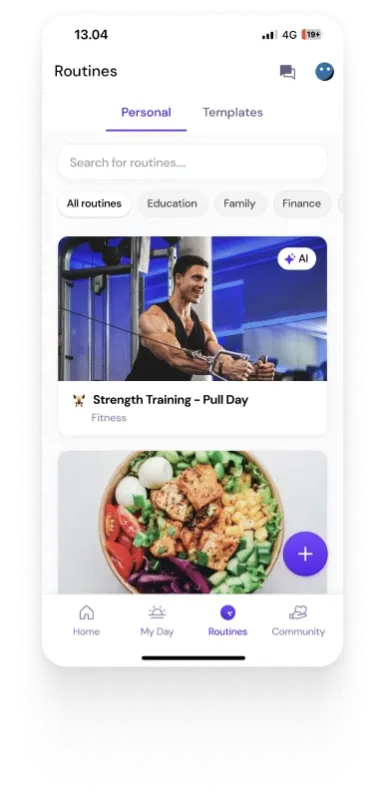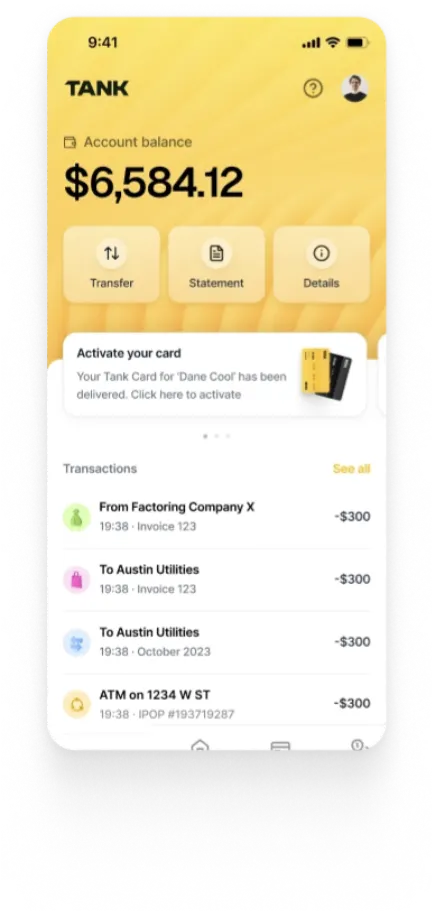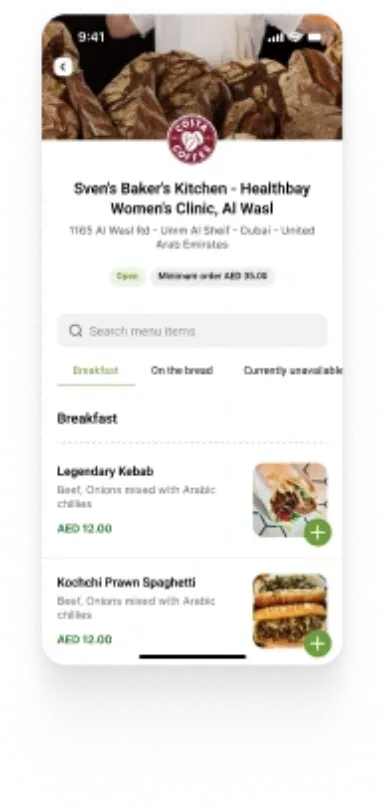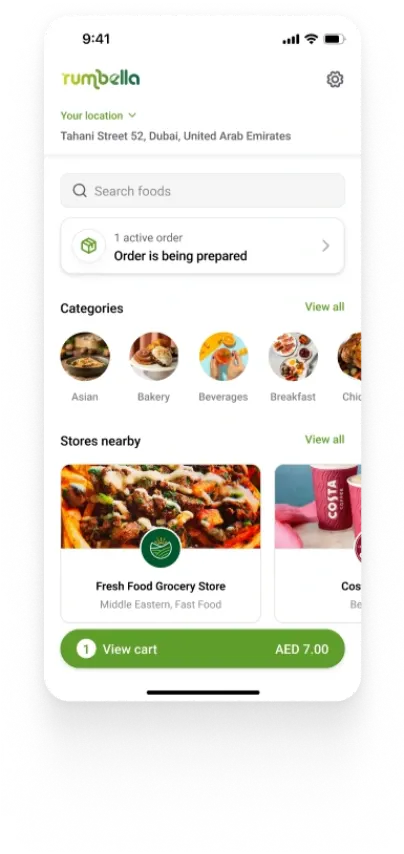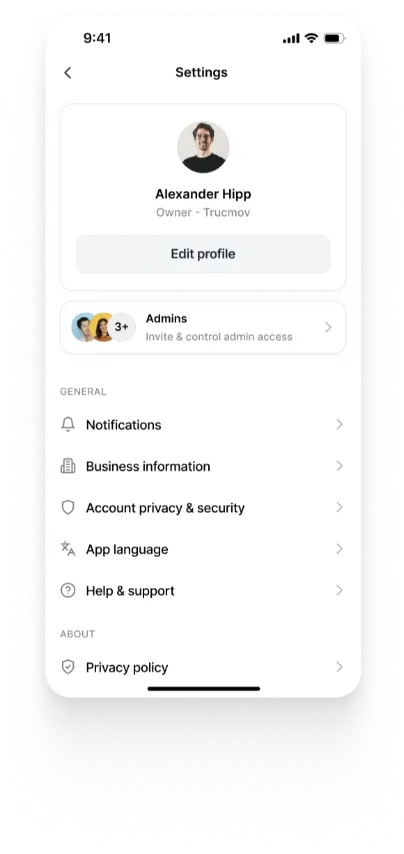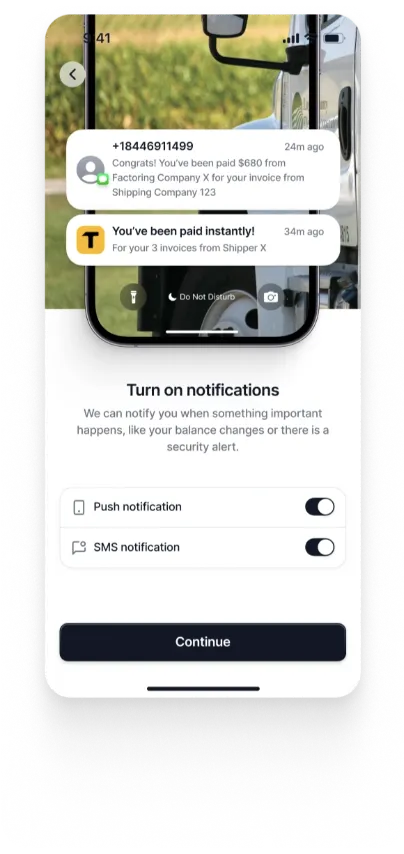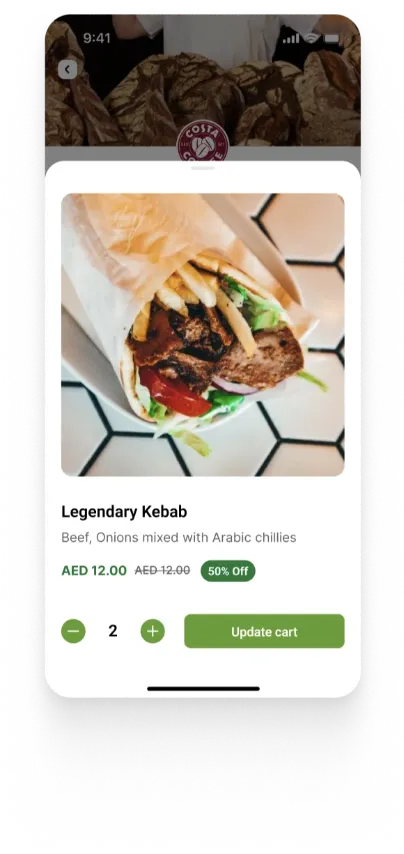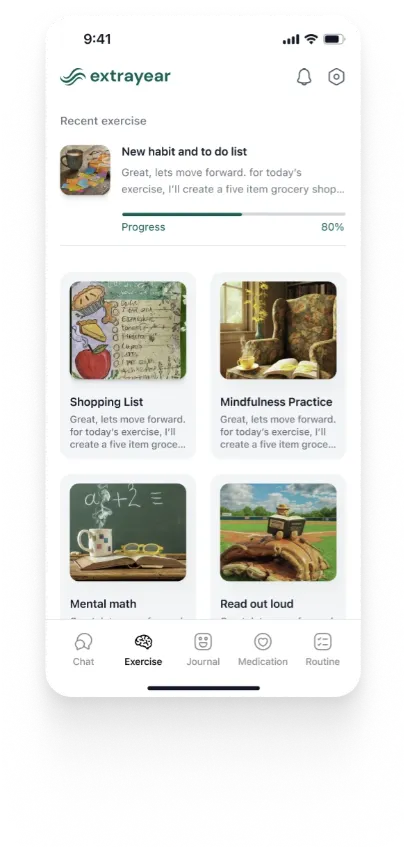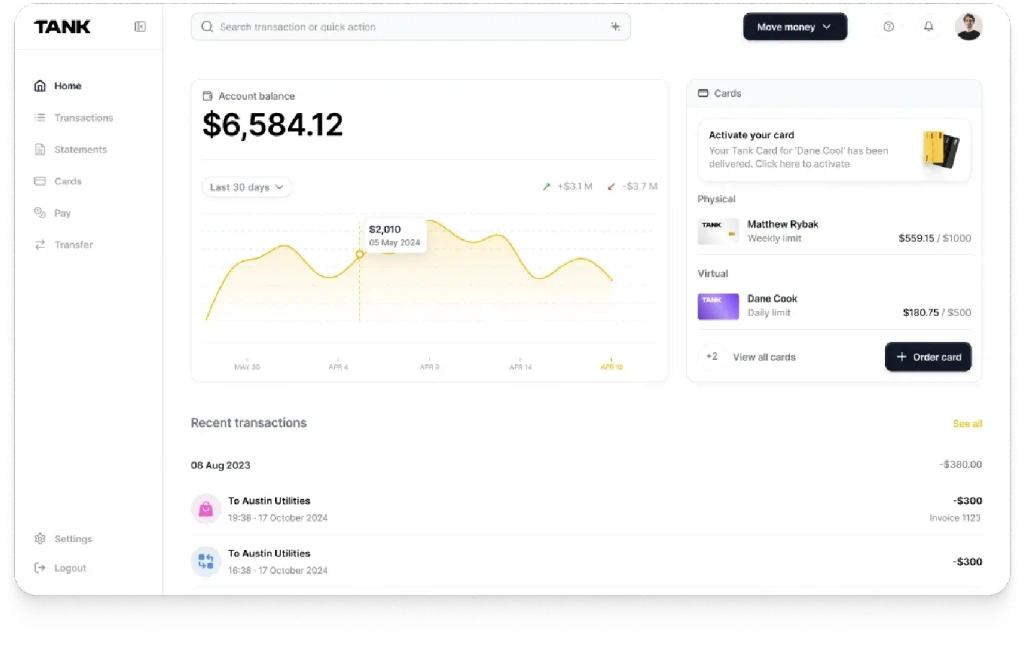GPT‑4.1 and the Frontier of AI: Capabilities, Improvements, and Comparison to Claude 3, Gemini, Mistral, and LLaMA
Summary
GPT-4.1 sets a new benchmark in AI with standout improvements in coding, instruction-following, and long-context understanding (up to 1M tokens). It offers faster, cheaper performance and strong multimodal image comprehension. Compared to Claude 3, Gemini, Mistral, and LLaMA, GPT-4.1 excels in practical deployment, especially in code-heavy and agent-oriented use cases.
Key insights:
Superior Coding Performance: GPT-4.1 leads coding benchmarks, outperforming GPT-4 and Claude 3, making it ideal for developers and coding agents.
1M Token Context: Supports unprecedented context length, enabling it to process massive datasets or entire codebases in one prompt.
Instruction Adherence: Enhanced alignment with user intent ensures fewer prompt rewrites and better conversational flow.
Multimodal Image Analysis: Accurately interprets images, charts, and mockups—useful in UI, document review, and vision-based tasks.
Speed & Cost Efficiency: Offers up to 80% lower token costs and faster responses via a tiered model structure (Full, Mini, Nano).
Business-Ready Reliability: Tuned for production with tool integration, improved grounding, and extended knowledge cutoff (June 2024).
Introduction
Generative AI models are evolving at breakneck speed, offering powerful new capabilities that can transform products and businesses.The most recent development in this competition is OpenAI's GPT-4.1, a model that builds on the success of GPT-4 while offering significant improvements for practical uses. Product managers, technical experts, and startup founders need to know not just what GPT 4.1 offers, but also how it compares to other top AI models from major companies like Google, Anthropic, Meta, and the open-source community. The features and enhancements of GPT 4.1 are examined in detail in this insight, which is followed by a comparison with Claude 3 (Anthropic), Gemini (Google), Mistral (open-source), and LLaMA (Meta). We will look at the licensing model, developer-friendliness, ecosystem maturity, architectural subtleties, and strengths of each approach. Emphasizing real-world business ramifications and assisting decision-makers in selecting the best AI model for their requirements are the objectives.
GPT‑4.1: New Capabilities and Improvements
GPT‑4.1 is OpenAI’s newest series of GPT models, introduced via API in April 2025 .With an emphasis on three key areas—coding proficiency, instruction-following, and long-context handling—it constitutes a substantial incremental improvement over GPT-4. Because of these enhancements, which were prompted by developer feedback and real-world usage patterns, GPT 4.1 is particularly useful for contemporary applications.
1. Enhanced Coding Performance
GPT-4.1's ability to generate and comprehend code is one of its most notable features. The model was tuned by OpenAI for software jobs, and it now performs far better than earlier iterations of GPT-4 in coding benchmarks. On the SWE-Bench coding benchmark, for example, GPT-4.1 achieves a score of 54.6%, 21 percentage points higher than GPT-4 (GPT-4o), and even higher than the previous GPT-4.5 model by 26.6 points. In actuality, this implies that GPT 4.1 is more accurate and consistent than its predecessors in writing, analyzing, and debugging code. The model created functional software prototypes with few errors throughout OpenAI's demonstrations, and it even created unit tests for its own code. These enhancements result in quicker development cycles and more dependable engineering coding helpers. OpenAI's product chief stated in a WIRED interview that GPT 4.1 is "excellent at coding."wonderful for creating agents," emphasizing its capacity to manage intricate programming assignments and act as the foundation for AI-powered software agents.
2. Stronger Instruction Following
GPT 4.1 also emphasizes more faithfully adhering to user intent and instructions. GPT-4.1 scored 38.3% on the MultiChallenge, a standardized instruction-following test, which is around a 10.5% absolute gain above GPT-4's performance. Practically speaking, GPT 4.1 reacts to cues with less misinterpretation and requires less rewording from the user. For product managers looking to integrate AI into user-facing products, this dependability is essential since it guarantees a better user experience when the AI assistant comprehends complex questions or multi-step directions. Extensive reinforcement learning with human feedback (RLHF) and other methods have been used to fine-tune the model such that it can follow intricate, multi-step instructions while preserving context. This means that for organizations, using GPT 4.1 can feel more natural and require less "prompt engineering" to achieve the intended result.
3. Massive Long-Context Handling
GPT 4.1's capacity to manage incredibly huge contexts is arguably its most revolutionary improvement. In contrast to the already expansive 128k token context of the late GPT-4 versions, GPT 4.1 allows context windows of up to 1 million tokens. Practically speaking, one million tokens is about the same as loading eight full copies of the React codebase simultaneously. Whether evaluating lengthy legal contracts, synthesizing a vast collection of research papers, or checking an entire repository of source code for defects, GPT-4.1's long-context capabilities enables it to ingest and reason over very big texts or datasets in a single prompt. In addition to taking in this much data, the model also shows enhanced long-context understanding, which allows it to remember and apply details from any part of the prompt without becoming disoriented. Real-world use cases like creating thorough reports from large data dumps, summarizing lengthy documents, and troubleshooting a whole codebase at once are made possible by this capability. GPT 4.1 established a new benchmark for long-context understanding (Video-MME), demonstrating its capacity to extract pertinent information from extremely long, multimodal inputs.
4. Multimodal Image Understanding
GPT‑4.1 continues OpenAI’s push into multimodal AI by exhibiting strong vision capabilities.It is capable of accurately analyzing or describing images that are fed into it. Notably, the smaller GPT-4.1 mini model frequently outperforms the original GPT-4 in vision challenges and demonstrates a "significant leap forward" in picture understanding. This implies that GPT 4.1 can decipher charts, images, or diagrams that are sent to it, allowing for use cases such as analyzing a document snapshot or comprehending a user interface mock-up. The outputs of GPT-4.1 are still text-based, in contrast to certain rival models; while it can describe or extract information from images, it cannot create images on its own. However, GPT-4.1's multimodal comprehension is a useful tool for situations when text and visual data mix (like examining a PDF report with graphs; for example).
5. Speed and Cost Improvements
Although GPT‑4.1 has more capabilities, it has been made more efficient. Compared to earlier models, it is quicker and more economical. According to OpenAI, GPT 4.1 responds roughly 40% faster than GPT 4 (also known as GPT 4o).Just as important, the cost for processing input (prompt tokens) has dropped significantly – up to 80% lower cost per input token compared to prior versions. Due in part to the introduction of smaller specialized models, these optimizations were accomplished without compromising the quality of the output. The full GPT-4.1, a distilled GPT-4.1 Mini, and an even leaner GPT-4.1 Nano are the three tiers that make up the GPT-4.1 family. The tiny model matches or surpasses GPT-4's accuracy on most benchmarks while cutting latency and cost by 83%. In the meantime, GPT‑4.1 Nano maintains the full 1M token context window while providing extremely low latency and cost (perfect for real-time applications). This tiered approach allows developers and product teams to select the model size that best suits their use-case, whether it be for rapid autocomplete or categorization jobs (micro model) or high-stakes complex reasoning (full model), all while staying within the GPT 4.1 ecosystem. Wider implementation of GPT-4.1 in production systems, including those with strict latency requirements or financial constraints, is made possible by the improved price-performance ratio.
6. Real-World Utility Focus
GPT 4.1's improvements were all built with real-world uses in mind. Working with the developer community, OpenAI adjusted the model to focus on the tasks that are most important in actual deployments. The model family that is produced is flexible and easy for developers to use. It has an updated knowledge cutoff of June 2024 (so it is aware of more recent information outside the box), enables function calling (for tool/API integration), and exhibits less instances of "going off track" in conversations. The dependability improvements in GPT 4.1 are particularly crucial when developing AI agents, which are self-governing systems that carry out multi-step tasks. Improved instruction adherence and long-term context tracking enable GPT-4.1 to power agents that execute user requests with little assistance from humans. For instance, in a single session, a GPT-4.1 agent might scan a number of financial reports and generate a logical analysis, or independently search through tens of thousands of pages of customer service knowledge base and answer a user's question. Because of these features, GPT-4.1 is an attractive option for companies wishing to develop cutting-edge AI-powered solutions, such as research assistants, chatbots for customer service, and coding copilots.
Notably, as of its availability, GPT 4.1 may only be accessed through OpenAI's API. Over time, the enhancements have been partially integrated into the ChatGPT service; nevertheless, developers can access the full potential, particularly the 1M context, via the API. This is in line with OpenAI's plan to give developers access to the most cutting-edge models for incorporation into their own apps while maintaining a conservative and incrementally upgraded ChatGPT experience for the general public.
In summary, GPT‑4.1 offers significant advancements in context length, instruction comprehension, and coding that together raise the bar. While addressing earlier drawbacks like context size and reactivity, it maintains and builds upon GPT-4's general reasoning and fluency strengths. Now that these features have been defined, we can examine how GPT-4.1 stacks up against other well-known AI models in the market, each of which has its own design ethos and special advantages.
Comparing GPT‑4.1 with Other Leading AI Models
There are several competing models in the AI space from open-source projects and leading companies. Here, we contrast GPT 4.1 with four prominent competitors: the Claude 3 from Anthropic, the Gemini from Google, the open-source Mistral model, and the LLaMA family from Meta. With differences in architecture, modality (text, code, graphics, etc.), license, and ecosystem support, each of these models reflects a distinct strategy for advanced artificial intelligence. Businesses can make better decisions if they are aware of their relative advantages and disadvantages.
1. Claude 3 (Anthropic)
A direct rival in the vast language model market, Anthropic's Claude 3 was created with a focus on usefulness and security. Similar to GPT 4.1's nano/mini/full tiering, Claude 3 debuted a family of models in March 2024: Claude 3 Haiku, Claude 3 Sonnet, and Claude 3 Opus. The most potent is Opus, Sonnet strikes a compromise between speed and intellect, and Haiku is a lightweight, fast model. Anthropic's Claude 2 series was greatly outperformed by all Claude 3 models.
Strengths and Capabilities: Perhaps Claude 3's greatest selling point is its incredibly huge memory and context window. In addition to having a 200,000 token context window at launch, the Claude 3 models can handle over 1 million tokens with specific clients, which is equivalent to the highest limit of GPT 4.1. This long context capability, combined with rigorous “near-perfect recall” training, allows Claude 3 to excel at jobs like reading and summarizing very large papers or entire books. According to an internal assessment, the biggest Claude 3 model (Opus) was able to identify when a piece of information was fabricated and could recall details from a large corpus with 99% accuracy. Claude 3 Opus has outperformed many of his peers in terms of raw intelligence, achieving near-human level performance on knowledge and reasoning benchmarks, including as strong scores on MMLU (multi-domain knowledge) and GSM8K (math reasoning). Additionally, Claude 3 is bilingual and works effectively in Spanish, Japanese, and French without the need for extra tweaking.
The vision of Claude 3 is another noteworthy aspect. Claude 3 had advanced visual comprehension capabilities comparable to those of other top models according to Anthropic. Photographs, maps, and even technical schematics can be analyzed by it. Since a lot of business knowledge is kept in PDFs or slide presentations with mixed media, enterprise users found this to be helpful. For instance, Claude is able to analyze a presentation slide and respond to inquiries regarding the information displayed in a chart. But like GPT 4.1, Claude's output modality is text; it does not create new images; instead, it describes visual input.
Additionally, Claude 3 was designed to provide a quick and responsive user experience. The Haiku variation can read a thick research paper with 10,000 tokens in less than three seconds, making it "the fastest and most cost-effective model on the market for its intelligence category." Even the larger models are optimized; for example, Claude 3 Sonnet is smarter than Claude 2 and produces results 2× faster. This focus on low latency makes Claude suitable for real-time applications (like live chat support or interactive assistants) where users expect instant answers.
Safety and Alignment: Claude has a unique alignment profile thanks to Anthropic's Constitutional AI model training methodology. Compared to previous Claude models, the new Claude 3 models make less unjustified rejections and are intended to be helpful, honest, and harmless. In actuality, this means that Claude 3 is less likely to reject a borderline request outright; instead, it makes an effort to better understand the user's intentions and only rejects when there is a real risk (such as when the user is being instructed to do something dangerous). While keeping guardrails in place, this improves the user experience by reducing "I am sorry, I can not help with that" dead ends. According to Anthropic's internal tests, Claude 3 also increased factual accuracy, nearly tripling the percentage of right responses on challenging questions when compared to Claude 2.1. The model will be able to cite particular sources for its responses according to Anthropic's intentions to enable citation tracing in Claude 3, a capability that might significantly boost trust in professional contexts.
Architecture and Ecosystem: Anthropic has not disclosed specifics such as the number of parameters, but architecturally, Claude 3 is similar to GPT in that it is a transformer-based LLM. (It is said to be about comparable to the scale of GPT-4.) Rather, Anthropic highlights the model's training process, which involves iterative feedback directed by an AI "constitution" of values to guarantee moral conduct. This results in a solid and enterprise-friendly model. Regarding the ecosystem, Claude can be accessed via an API (either directly through Anthropic or via cloud services such as Amazon Bedrock) and via a chat interface (Claude.ai). It has been used by businesses like Notion for document Q&A and incorporated into products like Slack (for Slack's AI assistant). Even though Anthropic has a smaller developer community than OpenAI, it is still expanding, and Claude has a strong platform presence thanks to the company's alliances with major tech companies like Google and AWS. Although Claude's licensing is exclusive and you pay for each usage, you have flexibility in terms of cost versus capabilities because you may choose from a variety of model sizes (Opus, Sonnet, and Haiku). You must use Claude's service; self-hosting is not permitted. Anthropic offers on-premise solutions through cloud partners and guarantees data management for firms worried about data protection, however it is not open-source.
Use Cases: Claude 3 excels in application scenarios that call for in-depth comprehension of lengthy texts or complex dialogue. For example, it excels at tasks like coding (Claude can write code too, but GPT-4.1 currently leads in coding benchmarks), multi-turn conversational assistants (where its subtle instruction-following and fewer refusals increase user satisfaction), summarizing long documents, and drafting content in a particular tone. Claude may be the best option for companies that require an AI assistant with a high level of dependability and guardrail customization. With certain advantages in context length and perhaps a more adaptable safety profile out of the box, it provides raw capabilities that are equivalent to GPT-4.1 in many areas.
2. Google Gemini
The Google DeepMind team created the flagship Gemini suite of next-generation AI models. Google's answer to GPT-4, Gemini, was unveiled in late 2023 and launched in 2024. It is one of the most comprehensive multimodal AI initiatives to date. Gemini is a family of models rather than a single model, and its current iterations include Gemini Ultra, Gemini Pro, Gemini Flash (and Flash-Lite), and Gemini Nano. Sundar Pichai and Demis Hassabis (DeepMind’s CEO) positioned Gemini as a game-changer combining techniques from DeepMind’s AlphaGo with large-scale language modeling
Strengths and Capabilities: Gemini's inherent multimodal potential is its defining characteristic. Gemini was trained from scratch using not only text but also images, music, code, and even video data, in contrast to GPT-4.1 or Claude, which are mainly text (with some image reading skills). Accordingly, all Gemini models are capable of comprehending many input formats, while the more sophisticated models are able to produce a variety of output formats. For instance, in addition to text, Gemini Pro has native audio and image output capabilities. The fact that Gemini allows users to request not only a written essay or snippet of code, but also an image (for example, "Create an infographic explaining cloud computing") or an audio clip (for example, synthesized speech or music) is a key distinction Google has successfully incorporated their extensive research on audio and visual generation (such as Muse and Parti) into the Gemini platform. This "all-in-one" approach helps streamline development for companies because Gemini seeks to manage language, vision, and audio under a single model API rather than utilizing distinct AI systems for each of these tasks.
Different needs are served by Gemini's model size variations. The largest, Gemini Ultra, is designed for extremely complicated jobs (with raw power comparable to or more than GPT-4), but because of its enormous resource requirements, it is only offered to a few partners. When Gemini 1.0 Ultra was first announced in December 2023, it was primarily kept internal. The workhorse is the somewhat smaller Gemini Pro variant, which was incorporated into Google's Bard AI chatbot and became the company's flagship for widespread use. Gemini 2.0 Pro, which represents an improvement in thinking and capabilities, was deployed by Google by the end of 2024. Gemini Flash is a condensed form of Pro that sacrifices some depth in favor of speed, making it ideal for short interactive applications. Additionally, there is Flash-Lite for an even smaller footprint and a unique version of Flash Thinking that was created to improve reasoning through the use of chain-of-thought procedures. Last but not least, the Gemini Nano variants (Nano-1 and Nano-2) are sufficiently compact to operate on gadgets; in fact, one Nano model is capable of running locally on the Pixel 8 smartphone. This collection includes both on-device and cloud super-models and showcases Google’s strategy to embed AI everywhere, with Gemini as the core.
In terms of raw performance, Google has claimed that Gemini’s top model is on par with or superior to GPT-4 in various tasks. Early testers observed that Gemini excelled at activities like complicated reasoning, coding, and multimodal content production, even if head-to-head benchmarks are frequently private. Any situation where Gemini must generate or comprehend images and words in a single flow—for example, a chat in which the AI may generate a diagram as part of its response—is a definite win. Gemini has an advantage in creative design use cases while GPT 4.1 is unable to achieve that (it can describe an image but not build one). Due to its integration with Google's knowledge network and search index in the Bard application, Google has also made use of its expertise in information retrieval, suggesting that Gemini will be skilled at using tools like search or fact lookup to enhance its responses.
Integration and Ecosystem: Being a Google product, Gemini is deeply integrated into the Google ecosystem. At debut, Gemini Pro was instantly connected to Google's Pixel devices and Google Bard, the conversational AI app. Google has shown faith in Gemini's capabilities by replacing their prior LaMDA-based Bard. Additionally, Gemini is made available to developers via Google Cloud's Vertex AI platform; for instance, as of December 2023, developers could access Gemini Pro using Google's AI Platform's Gemini API. By 2025, Google had extended Gemini's availability and kept it updated, with preview versions such as 2.5. Because of this close connectivity, adding Gemini services to an existing Google Cloud account can be really simple. Additionally, Gemini enables Google Workspace (Docs, Gmail) tools for intelligent drafting, as well as Google Search and Ads features for improved query comprehension. In effect, Google is leveraging Gemini across its entire product suite, which speaks to the model’s versatility and reliability at scale.
For developers, working with Gemini may involve Google-specific tooling (the Vertex AI environment, model IDs like gemini-2-*** etc.). Being in the Google stack makes it very developer-friendly; Vertex AI comes with capabilities like data protection, scaling, and monitoring right out of the box. Gemini is a closed model that is delivered via an API, and its usage is metered (price is equivalent to other top models). In contrast to open models, you are unable to inspect or self-host Gemini. There is no way to fine-tune Gemini locally, and licensing is proprietary (normal cloud service conditions). Google may provide fine-tuning through its platform, but not open weights. Prior to a wider rollout, Google conducted intensive red-teaming and placed a strong emphasis on safety. Citing the necessity for "extensive safety testing," they initially restricted Gemini's availability, suggesting a cautious deployment. Gemini has a large user base at this point because of corporate and Bard clients.
Use Cases: Gemini is ideal for applications needing multimodal AI interaction. Gemini, for instance, might be used by an e-commerce business to create a shopping assistant that, using a single model, can read out responses with realistic sounds or create visuals of product designs in addition to chatting with customers. Gemini may be used by content creation platforms to produce marketing writing and related images simultaneously. A Gemini-powered agent could read a webpage, take a snapshot, annotate it, and have a conversation with a user. This makes it ideal for sophisticated interactive agents. Gemini (via Vertex AI) can be utilized in enterprise processes for document processing (such as extracting data from text and image-rich forms) or producing rich media outputs (such as producing slide shows with text and image content)While OpenAI's models may still somewhat outperform Gemini in some coding benchmarks, Gemini's performance is on par with other top models in pure text tasks, such as coding and quality assurance. One drawback is that Google typically previews Gemini's most recent and potent versions to a small group of partners before to their general release, so they are not yet available to everyone. Therefore, a firm may use a slightly distilled version depending on when they access it. However, Gemini is a formidable competitor, particularly for businesses that demand extensive Google connection and multimodal output.
3. Mistral (Open-Source Models)
Established in 2023, Mistral AI is a firm that has rapidly become well-known for its open-source big language models. Mistral's approach is to share open-weight models that developers may use and refine without restriction, in contrast to OpenAI, Anthropic, or Google, which provide models via API and maintain weights proprietary (typically under the Apache 2.0 license). Mistral focuses on cutting-edge training methods and more compact, effective models that produce excellent results without requiring billions of parameters. Because of this, Mistral's models are highly appealing to startups who wish to avoid vendor lock-in and require greater control over the AI
Strengths and Capabilities: The first major release, Mistral 7B (7.3 billion parameters), came in late 2023 and immediately established itself as “the most powerful language model for its size”. Astonishingly, Mistral 7B was reported to outperform Meta’s LLaMA-2 13B on all benchmarks and even rival LLaMA-1 34B on many benchmarks.To put it another way, Mistral used 7B parameters to accomplish what other models required 2×–5× more parameters to accomplish. This was made possible by effective architecture adjustments and excellent training data. Mistral accomplishes this, in part, by using sophisticated attention processes and a large amount of pre-training on a carefully selected dataset. Startups with limited resources can use it because of its compact size, low operating costs, and ability to run on a single high-end GPU.
In January 2024, Mistral expanded on this by launching Mixtral 8×7B, an ensemble sparse mixture-of-experts (SMoE) model that blends eight 7B expert models. This effectively creates a 46.7B-parameter model with the inference speed of a model a third of that size (around 15B) because of the MoE design. On a number of benchmarks, this Mixtral model fared better than LLaMA 2 70B and even OpenAI's GPT-3.5, the model that powered early ChatGPT .Additionally, it supports many languages out of the box and a 32k token context. These accomplishments highlight Mistral's capacity for innovation and their ability to outperform their competitors through astute engineering. Mixtral 8×7B demonstrated that open models can achieve performance close to state-of-the-art and even outperform earlier proprietary models, even though it may not yet match GPT‑4.1 or Claude 3 on the most challenging jobs.
Mistral has expanded beyond text to include multimodal models. For instance, Pixtral 12B, a 12B parameter open model with picture comprehension capabilities, was launched in late 2024. Another publicly available model with picture comprehension is Mistral Small (v3.1 as of March 2025), demonstrating the team's dedication to multi-domain AI. Furthermore, Mistral offers specialized models to meet specific demands, such as Codestral (a 256k context code-focused model designed for activities like bug repair and code completion) and Mathstral (a mathematical problem solving model).
Licensing and Developer Friendliness: One of Mistral’s biggest draws is its open licensing. Key models are released under Apache 2.0 license, which means companies can use them commercially, modify them, and integrate them without fear of a restrictive license. GPT-4.1, Claude 3, and Gemini, on the other hand, only allow access through an API and have terms of service (and frequently exorbitant usage fees). A startup can use Mistral to download and execute the model weights on their own edge devices or servers. Sensitive information never needs to leave your environment in order to contact an API, providing complete data privacy and control. Additionally, it enables the model to be customized by fine-tuning on proprietary data. For example, you can simply fine-tune a Mistral model on a domain-specific dataset (such as legal texts or medical transcripts) to achieve greater performance in that domain. This is not possible with closed models(unless the provider offers a fine-tuning service, which can be costly and limited).
Mistral supports its models with an ecosystem of tools. Their models are easily deployable with standard libraries, and they offer an API for those who prefer a hosted solution. Their models are also widely available on platforms like Hugging Face. Mistral's releases are continuously improved upon by the open-source AI community, which produces refined versions for coding, role-playing, chat, and other applications. This community component offers numerous ready-to-use offshoots and speeds up improvements.
Performance and Limitations: Despite their great scale, Mistral's models do not yet outperform the largest proprietary models in absolute terms. Due in part to their immense scale and training on massive datasets, GPT 4.1 and Claude 3 continue to outperform each other in the most challenging reasoning, coding, and knowledge tasks. But the margin is narrowing. Open models may soon be able to match GPT-4 class performance with initiatives like Mistral 13B or larger models (as well as the MoE method). Indeed, a mixture-of-experts architecture is also used in Meta's most recent LLaMA 4 (described next), confirming Mistral's methodology on a broader scale. Operational limitations should also be taken into account. For example, implementing a Mistral model necessitates servers or GPUs, which adds to a company's expenses and technological overhead. Conversely, utilizing an API such as OpenAI’s offloads that to the provider. But for some, the trade-off is worth it for independence.
Use Cases: Mistral models are appropriate for businesses that require offline capabilities, cost control, or customization. To meet compliance standards, an organization that handles sensitive healthcare data, for instance, might implement a Mistral model on-premises to guarantee that no patient data leaves their servers. In order to avoid paying API fees, a firm integrating AI into their app can decide to use Mistral 7B or 13B, particularly if traffic is high and the reduced accuracy is acceptable. IDEs can leverage Mistral's code-oriented models (Codestral) to complete code locally without transferring it to a third-party cloud. These versions can also be used at the edge because they are lightweight. For example, you could run a good LLM straight on a laptop or smartphone for individualized support. To sum up, open models like Mistral provide developer-friendly flexibility: freedom to experiment, tweak, and deploy AI on one’s own terms, which is highly appealing for some use cases despite the raw performance trade-offs with giants like GPT‑4.1.
4. Meta LLaMA Family
The LLaMA (Large Language Model Meta AI) family from Meta is another important component of the ecosystem of AI models, particularly in the open-source space. Meta's approach has been to make sophisticated models available in a comparatively open way to encourage research and community creativity, beginning with the initial LLaMA in early 2023. With the release of LLaMA 2 in mid-2023 (which included 7B, 13B, and 70B parameter variants), LLaMA 3 by late 2024 (which included an 8B and a 70B and powered Meta's consumer-facing AI assistant), and the most recent LLaMA 4 in April 2025, LLaMA has advanced significantly over the last two years. Every iteration has advanced open models to the point that LLaMA 4 is now positioned as a direct rival to high-end systems like GPT‑4.1.
Strengths and Capabilities: The LLaMA models are renowned for their openness and strong performance on a variety of linguistic tasks. For instance, LLaMA 2, a 70B parameter model, was released under a permissive license for research and commercial usage (with few restrictions) and received widespread recognition for doing almost as well as GPT-3.5 in numerous benchmarks. As a result, a thriving ecosystem developed, with LLaMA 2 serving as the foundation for innumerable refined models (for chat, instruction, and particular domains) and optimizations to run it effectively on consumer hardware. Because weights were available, anyone could experiment and make the model better. In 2023–2024, LLaMA 2 consequently emerged as the foundation for numerous open-source chatbots and applications.
Meta took things a step further with LLaMA 3. LLaMA 3 added additional features and a larger scale. Remarkably, Meta apparently trained a 405 billion parameter model (LLaMA 3.1), making it the world's largest publicly available foundation model. Despite being quite computationally intensive, this model significantly raised the bar for open models. Additionally, LLaMA 3 introduced multimodality; Meta revealed at Connect 2024 that their "first ever multimodal models" were incorporated into LLaMA 3.2, suggesting that certain LLaMA 3 variations are capable of handling data other than text, such as images. Additionally, LLaMA 3 was included into Meta's own products. For example, Meta introduced an AI assistant (simply referred to as "Meta AI") in Instagram, WhatsApp, and Facebook Messenger that was driven by an LLaMA 3 model. This illustrates LLaMA's resilience and preparedness for large-scale, real-world application (supporting millions of users).
The recently published LLaMA 4 in April 2025 employs a Mixture-of-Experts (MoE) architecture, which is a revolutionary technique. On a bigger scale, this is the same idea as we observed with Mistral's Mixtral model. By including numerous "experts" who specialize in various areas, MoE enables the model to grow to trillions of parameters without correspondingly raising the cost of inference. According to news sources, Meta unveiled the Scout, Maverick, and Behemoth LLaMA 4 version. Developers who meet specific requirements can access Scout and Maverick, while the largest, Behemoth, was only in preview. Although LLaMA 4 is multimodal, it had significant restrictions when it was first released. For example, during the U.S. deployment, the assistant could view photos and use logic to interpret them, but this functionality was still region-limited. One intriguing finding is that Meta adjusted LLaMA 4 to be more accommodating by reducing its reluctance to respond to delicate inquiries (much like Claude 3). In situations where excessively cautious responses are problematic, they assert that LLaMA 4 offers useful responses without abusing safety triggers (while still guaranteeing safety for truly hazardous requests).
Openness and Licensing: Meta’s releases have been progressively more open. The original LLaMA had a strict non-commercial license (research only), but LLaMA 2 was released with a community license allowing commercial use with few restrictions .This made it easier for businesses and products to be adopted. Although Meta employs a Source-available community license, which is less generous than Apache 2.0 but still generally free for most users to use, LLaMA 3 and 4 carry on this openness trend. There may be some restrictions (for instance, the license for LLaMA 2 included a requirement that businesses with more than 700 million users obtain separate authorization, so focusing on the biggest tech firms). The main idea is that, like Mistral's strategy, you can download and run LLaMA models locally or on any infrastructure, despite some developers pointing out subtleties in the LLaMA 4 license. To facilitate accessibility, Meta even hosts the models on repositories like GitHub or permits other parties (like Hugging Face) to share them.
The environment surrounding LLaMA is thriving. Due to the availability of the weights, researchers and enthusiasts have developed tools to quantize LLaMA (which can be used on smaller GPUs), refined it for chat (e.g., Alpaca and Vicuna were early chat-tuned versions of LLaMA 1), and even integrated it with retrieval systems. Because of its robust performance and free availability, LLaMA backbones are used by default in many open-source applications. In addition, Meta offers extensive assistance through the publication of thorough model cards, the hosting of forums, and even the incorporation of LLaMA-based assistants for customer input in their consumer products. Like Linux in OS systems, LLaMA has essentially become a cornerstone of the open AI model ecosystem, upon which anybody can develop.
Comparison to GPT‑4.1: Although direct comparisons are still being conducted, LLaMA 2 (70B) was about comparable to GPT-3.5 in terms of raw capability, LLaMA 3 (with the massive 405B model) targeted GPT-4 territory, and LLaMA 4 with MoE may achieve GPT-4.1-level performance. One distinction is that, although the gap has shrunk somewhat, OpenAI's GPT models still outperform other models in specific domains, such as coding, where OpenAI's extensive infrastructure and code fine-tuning demonstrate advantages. For example, an open LLaMA 70B with code improvements, such as community variations or CodeLlama (published by Meta), became a useful coding help. Meta shows increased training and inference efficiency using LLaMA 4's MoE architecture, which could make these models more potent and a little simpler to operate than a comparable dense model.
Use Cases: LLaMA models are used in many of the same scenarios as GPT‑4.1 or Claude, especially where cost or customization is key. To save money on API fees and get complete control over the model's behavior (by fine-tuning it on their dialogue data), a startup might, for instance, utilize LLaMA 2 or 3 to power its chatbot. Numerous businesses are investigating LLaMA for internal tools, such as coding or writing helpers, that allow them to refine the model on their knowledge base or codebase. Larger businesses may choose to use LLaMA 4 as an open alternative to GPT 4.1, especially if they wish to implement a top-tier model on their own cloud infrastructure. The main selling point of LLaMA is its open availability and great performance; you may obtain state-of-the-art research-level models practically for nothing. However, utilizing LLaMA necessitates greater ML knowledge because you have to control model serving, optimize inference, etc., which services like OpenAI’s API handle for you.
In conclusion, Meta's LLaMA family distinguishes itself as a top suite of open models, consistently bridging the gap with proprietary models. Transparency, adaptability, and community-driven innovation are its strong points. The release of LLaMA 4 in 2025 indicates that even the most advanced AI capabilities (multimodal, expert-level reasoning LLMs) are no longer only available to a select few businesses; rather, any developer who is prepared to put in the work can access them. For startups and product teams, who now have a variety of feasible options for advanced AI—from fully managed services like GPT-4.1 to open models like LLaMA that they can customize—this democratization might be a game-changer.
Comparison Table of GPT‑4.1 vs Other Models
To crystallize the differences, the table below outlines key aspects of GPT‑4.1 and its peer models Claude 3, Gemini, Mistral, and LLaMA (latest versions as discussed):

Key Considerations for Choosing an AI Model
With several advanced AI models available, choosing the right one for your business or product involves weighing multiple factors. Here are some practical decision-making considerations based on the above comparisons:
1. Performance and Capabilities
Assess the degree of precision, thinking, and specialist knowledge required. Top-tier proprietary models like Claude 3 or GPT-4.1 would be excellent choices if your application requires the utmost performance in coding or general thinking. A smaller open model (Mistral or LLaMA) may be adequate for many everyday operations or for fine-tuning target domains. Examine benchmarks on jobs comparable to yours, if any are available. For example, coding benchmarks indicate GPT 4.1 leading, whereas a knowledge Q&A task might find Claude 3 or LLaMA 4 very competent.
2. Context Length Needs
Think about models with longer context windows if you need to handle or analyze massive documents or substantial datasets (such as lengthy transcripts, codebases, or literature corpora) all at once. Both Claude 3 and GPT 4.1 have incredibly lengthy contexts (~100K–1M tokens), which can be game-changing for such use cases. Open models like LLaMA and Mistral are catching up here (e.g., Mistral supports 32K and plans for more), but may require more engineering to utilize effectively at that scale.
3. Multimodality
Consider whether using modalities other than text would improve your application. All models are applicable to applications that are solely text-based (chatbots, text analysis). However, Google's Gemini clearly has an advantage with its image/audio generating capabilities if you imagine the AI managing visuals or audio, such as an assistant that a user can talk to or one that can create product images. Although Claude and GPT-4.1 can comprehend images (and Meta's most recent models do as well), they are unable to produce visual or aural information. Therefore, Gemini or a combination of models may be required for a product such as an AI designer or a multimodal creative tool.
4. Customization and Fine-tuning
Think about if you need to significantly alter the model's behavior or refine it using your own data. Here, open-source models (Mistral, LLaMA) excel since you have complete control over how you train them, modify their biases, include outside knowledge, etc. Limited modification is possible with closed models like GPT 4.1 and Claude (you primarily need to prompt-engineer or utilize the parameters that are offered); OpenAI has started to enable fine-tuning for some models, but not for GPT-4 yet, and it costs extra.If you have private training data and your application is in a very narrow domain (like medical diagnostics), an open model that you may adjust may perform better in that domain than a broad model. Additionally, without the limitations of an API, open models can be integrated into workflows (for instance, include a fact retrieval system and modify the model to use it).
5. Ecosystem and Tools
The surrounding ecosystem's level of maturity can greatly speed up development. In addition to having a sizable community and numerous third-party libraries and plugins, OpenAI's GPT models also connect with Microsoft's platform and other technologies. Since OpenAI presently has the largest ecosystem, GPT-4 based systems may include ready-made plugins (for example, online surfing and databases). Claude 3 features expanding integrations and is available on platforms such as Slack. Thanks to Anthropic's connection with AWS, Claude is easily accessible on Amazon's cloud. If you already use Google Cloud or wish to easily integrate Google services (security, data stores, etc.), Google's ecosystem is alluring. However, there are a lot of community-built extensions available in open-source ecosystems (Hugging Face, GitHub repos), but some could need additional assembly. A well-supported API may be better than developing your own model deployment if support and speed to market are important considerations.
6. Licensing and Cost
Cost structure and lawful usage are both impacted by licensing. Gemini, Claude, and GPT-4.1 are proprietary; you must follow their usage guidelines and pay for each API call. At scale, this can get costly (although Anthropic/Google pricing is competitive and GPT‑4.1's cost per output is now cheaper). Additionally, content limitations may exist (OpenAI, for instance, prohibits the creation of some types of content). Once installed on your hardware, the only expenses associated with LLaMA and Mistral are infrastructure and electricity. Running an open model for a high-volume service may end up being less expensive in the long term than paying for an API, but it will require an upfront hardware and engineering investment. Most startups are free to use Meta's LLaMA license, which is fairly open for commercial use, and Mistral's Apache license, which is very open. Just be mindful of any specific provisions (Meta's license may limit use by some sensitive use cases or very large tech companies). Despite the maintenance cost, an open model is appealing if your use case necessitates that data remain on your premises (for regulatory purposes) or if you wish to eliminate vendor dependency.
7. Developer and User Experience
Lastly, think about the entire experience. You may be able to construct and iterate more quickly (without ML operations difficulties) if you need a low-friction approach and rapid prototyping by using GPT‑4.1 via API. OpenAI offers a very easy developer experience with excellent examples, documentation, and an easy-to-use UI. Although it requires knowledge of Google Cloud, Google's Vertex AI for Gemini is likewise strong. If you only need to call the model, using Claude or other models through an API is similar and simple. The highest level of flexibility can be obtained by hosting a model such as LLaMA/Mistral, however this will include setting up model serving, scaling, monitoring, etc. Regarding the user experience, take into account response speed and dependability. While an API request may introduce delay and rely on external uptime, a locally hosted model can provide low latency (no network calls) and availability. But without substantial infrastructure, the biggest models could just be too heavy to provide with low latency (for example, most companies might find it difficult to serve LLaMA 4 Behemoth). In certain situations, a managed service or a somewhat smaller model might actually offer a more responsive user experience.
Conclusion
With its remarkable combination of coding proficiency, following directions, and managing enormous volumes of information, GPT 4.1 marks a substantial breakthrough in AI capabilities. It brings up new opportunities for product teams and entrepreneurs, from developing AI agents that can perform complicated tasks on their own to designing smarter coding helpers. It is evident, nevertheless, that no one model excels at everything. Mistral's lean-and-mean open models that put AI in your hands, Google's Gemini with unparalleled multimodal prowess, Meta's LLaMA, which is pushing the open-source AI frontier with community-powered innovation, and Claude 3's long-form finesse and safety-first approach are all part of the competitive landscape.
To sum up, GPT-4.1 is a strong tool in the AI toolbox that performs comparably to Claude 3, Gemini, Mistral, and LLaMA, particularly in coding and general-purpose reasoning. However, context will always determine the "best" model. Businesses can use AI more successfully and responsibly by knowing the respective capabilities of various models, such as Claude's conversational depth, Gemini's creative variety, Mistral's open agility, and LLaMA's scalable openness. The AI landscape is more diverse than ever before, which eventually helps those wishing to apply AI solutions by providing a solution that meets all needs and the freedom to develop without being constrained by one-size-fits-all rules. With GPT 4.1 and its counterparts, we have a growing toolkit to create the next generation of intelligent applications as the AI frontier continues to grow.
Authors
References
AI, Mistral. “Mistral 7B.” Mistral.ai, 27 Sept. 2023, mistral.ai/news/announcing-mistral-7b.
Anthropic. “Introducing the next Generation of Claude.” Www.anthropic.com, 4 Mar. 2024, www.anthropic.com/news/claude-3-family.
“Anthropic’s Claude 3 Opus Model Is Now Available on Amazon Bedrock | AWS News Blog.” Aws.amazon.com, 16 Apr. 2024, aws.amazon.com/blogs/aws/anthropics-claude-3-opus-model-on-amazon-bedrock.
“Introducing GPT-4.1 in the API.” Openai.com, 2025, openai.com/index/gpt-4-1.
Knight, Will. “OpenAI’s New GPT 4.1 Models Excel at Coding.” WIRED, 14 Apr. 2025, www.wired.com/story/openai-announces-4-1-ai-model-coding.
“Mistral AI’s Open-Source Mixtral 8x7B Outperforms GPT-3.5.” InfoQ, www.infoq.com/news/2024/01/mistral-ai-mixtral.
Wiggers, Kyle. “Google Gemini: Everything You Need to Know about the Generative AI Models | TechCrunch.” TechCrunch, 27 Feb. 2025, techcrunch.com/2025/02/26/what-is-google-gemini-ai.
---. “Meta Releases Llama 4, a New Crop of Flagship AI Models | TechCrunch.” TechCrunch, 5 Apr. 2025, techcrunch.com/2025/04/05/meta-releases-llama-4-a-new-crop-of-flagship-ai-models.














